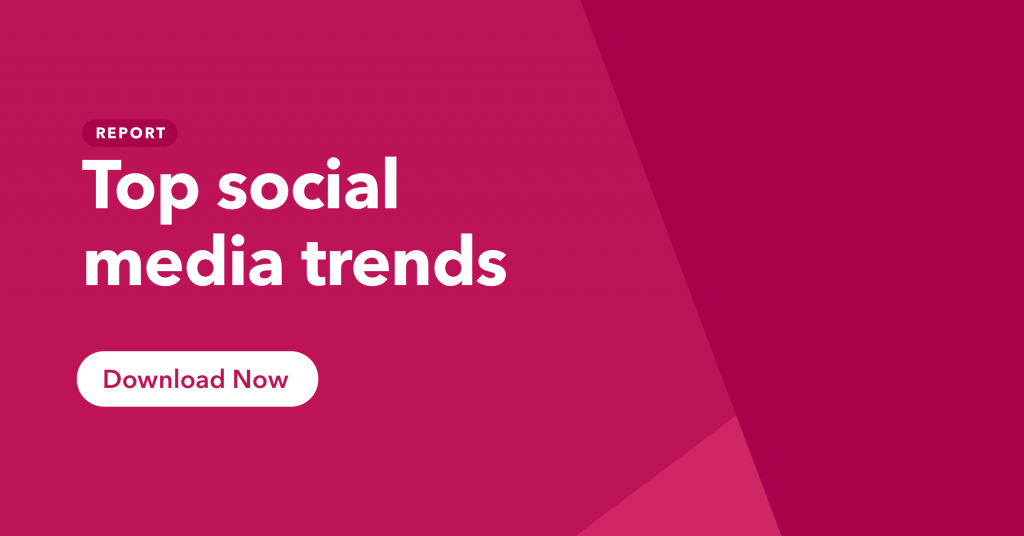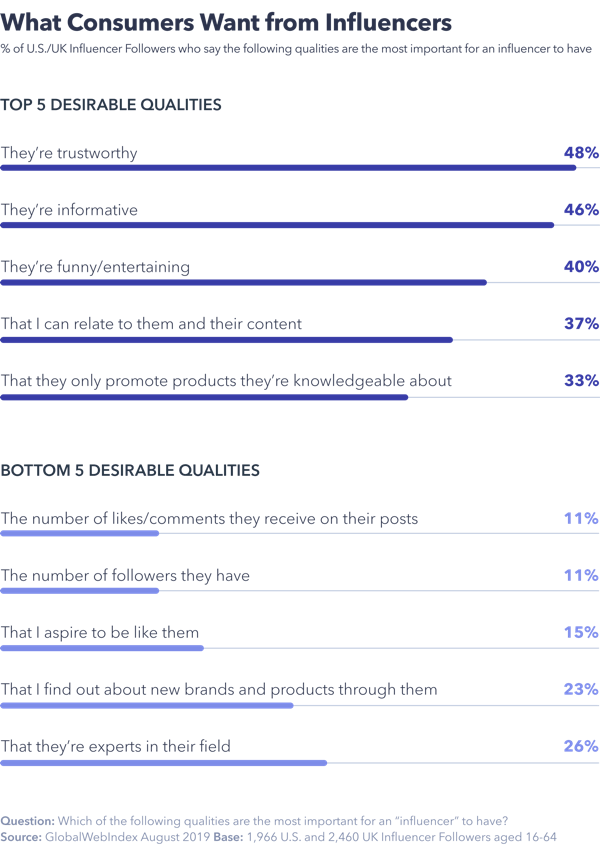Instagram is loved by fans globally for its image-centric aesthetic. It’s simple to use, and still gives people the chance to share the content they want, how they want, with who they want.
Over the years, the app has gone through a plethora of changes, including the introduction of direct messaging, the release of a “stories” feature, and the launch of a video platform: IGTV.
Clearly these updates intend to fend off competition from other post-Facebook apps — the likes of Snapchat and Pinterest springing to mind. And it’s certainly having an impact.
On top of these features, the platform has recently delved further into the world of commerce. Users are now buying products from their favorite influencers, swiping up to see more on stories, and — as of March this year — even completing purchases within the app.
As Instagram takes on the challenge of incorporating commerce into traditional social media, we isolated six central trends emerging right now.
So buckle in for a #nofilter insight into the changing world of Instagram.
1. Generation Z are its biggest fans.
Social media usage is growing, and it doesn’t seem to have hit a ceiling quite yet. In 2012, the average time spent on social media was 1 hour and 30 minutes per day, today this has grown to 2 hours and 24 minutes for the average internet user.
In terms of Instagram, its members are relatively diverse across demographics. Our data has found that men are now almost as likely as women to have an account and what’s interesting is that while still the smallest generational community, the number of baby boomers on the platform has doubled in the last three years.
Indeed, when exploring generational differences it becomes apparent that the app is most popular among younger audiences. This is the case across all metrics, whether that be number of members, frequency of visitation or likeliness to engage.
This has made Gen Z the largest community on the platform.
Gen Z are expected to overtake millennials this year, accounting for 32% of the global population, and are gearing up to take center stage for brands and marketers. As this group begins their working lives, their spending power is on the rise, making this audience a key target for brands to reach.
2. There’s a willingness to engage with brands.
It’s no big secret that Instagram has the attention of brands. From the world’s biggest retailers to your local cafe, an Instagram following has very quickly become a necessity.
Noting then the massive presence of a ready-to-spend Gen Z, Instagram is quickly becoming the go-to option for targeting this cohort. What is perhaps even more interesting is that Gen Z is the most likely generation to be willing — and to an extent seeking — to interact with commercial brands on the platform.
Gen Z are the generation most likely to have followed a brand or company, visited a company, brand or product’s page, or clicked on a sponsored post on Instagram within the last month.
Additionally, our data shows Gen Z are keen to engage with brands more generally via social networks. For example, they’re 10% more likely than the average internet user to like/follow a brand on a social network or click on a promoted/sponsored post on a social network.
If marketers are looking to target this group, Instagram is a sure-fire way to do it.
3. Influencers are still driving huge engagement.
So we know Gen Zs can’t get enough of Instagram and what’s more, they’re the most accepting generation of brand-led content on this platform. Yet, as with all advertising, delivery is key. A boring picture, with a few quirky hashtags, and a cheesy caption isn’t going to cut it. In 2019, a successful brand campaign should be utilizing the unique power of influencers.
Our data found that around 3 in 4 Gen Z Instagram users fall under the Celebrity Networker¹ segmentation.
This cohort is much more likely than their generational counterparts to follow both traditional celebrities such as singers, comedians and actors; as well as more modern online personas such as bloggers and vloggers.
It comes as no surprise then that our bespoke August research in the U.S. and UK found Instagram to take the throne for influencer engagement among Gen Z, with 64% of this group engaging with influencers on the platform.
Moreover, their slightly older neighbours are not far behind, with 53% of millennials saying they also use Instagram for influencer engagement.
We only need to glance at Instagram to see the breadth of products influencers are promoting. Instagram really is in a prime position to own this space; it’s highly visual by design and the Stories feature enables influencers, of any kind, to get creative.
As a result, Instagram has emerged as a major platform in the influencer industry — an industry which some experts predict to be worth $10 billion by 2020.
4. Users won’t stand for a lack of authenticity.
Influencer marketing however is a rapidly developing tool. For campaigns to be effective on Instagram, brands must maintain credibility.
At its inception, Instagram’s visual-centric nature aimed to bring a sense of authenticity to a social media scene, which elsewhere often appeared exaggerated and fabricated. In recent times, however, we’ve seen the emergence of what has been coined “influencer fraud”.
A notorious example of this came earlier in the year when it was found that over half of popular British reality TV show, Love Island, contestants’ social media followers were fake. This observation, among many other examples, has fostered a demand for more credible and authentic influencers.
Furthermore, allegations of fakery haven’t helped the situation, such as a recent accusation that an influencer staged a motorcycle accident for publicity purposes.
Unsurprisingly then, our data has found that among UK and U.S. audiences, the most desirable quality in an influencer above all else is trustworthiness. Consumers seek full disclosure about what influencers are promoting, and this means being clear at the beginning of a post – not burying it deep within convoluted captions.
5. More followers doesn’t spell greater influence.
Following on from above, we see that Influencer Followers (referring to internet users aged 16-64 who engage with influencers on social media) care the least about the number of likes/comments influencers receive on posts, as well as the number of followers they have.
This signifies that consumers care about more important things than superficial qualities, such as an account’s perceived popularity.
Our data shows that more followers doesn’t equate to greater consumer trust.
In fact, influencer followers in the U.S. and UK trust smaller influencers the most, with 34% saying influencers with a follower count between 1,000 and 10,000 are the most credible.
Just 12% said that accounts with over a million followers represented credibility.
Brands are already beginning to recognize the potential of these “micro-influencers”. Their associated credibility often implies a very loyal fanbase with a shared online community. If that unity aligns with a brand’s target market, a well placed, cost-effective influencer partnership can bring great financial returns.
A great example is Adidas’ latest initiative: The Tango Squad FC Show. Coined the first “social media football team”, Adidas utilizes IGTV to develop personal connections with these small, aspirational influencers. A method which the brand believes could be more successful than its usual commitment to a single sporting superstar.
Of course it’s difficult to gauge the success of this campaign, but with the team amassing 41 million views across all social platforms, you could say they’re in pretty good shape
6. Instagram advertising can drive direct sales.
In March, Instagram released its “checkout” feature. This meant that for the first time users could begin making purchases in-app, without being redirected to a third-party browser.
While the current edition is in a closed beta format, such that only a select few U.S.-based companies can use the service, the potential long-term implications for Instagram marketing are phenomenal.
No longer is the role of the influencer solely to direct users to external websites, they’re now in the shop with you, encouraging you to make a purchase.
The tool’s propensity to return sales is yet to be seen, however the signs are pretty good.
Our data has found that 17% of UK and U.S. internet users were inspired by an influencer/celebrity post to make a purchase in the last month. What’s especially exciting is that this grew to 22% among Gen Zs.
Additionally, among those that said they were inspired by an influencer to make a purchase, 33% of this group say they clicked the “buy button” on social media that took them straight to the retailer’s website to complete the purchase. This suggests that Instagram ads go far beyond brand awareness, and it’s possible that a well placed campaign could help increase sales especially with the new availability of a checkout feature.
When the place of purchase is seamlessly integrated alongside the user’s favorite influencer, such a frictionless service will make closing the purchase journey much easier for many brands.
Instagram’s shift towards incorporating commerce is a slow burner, but our current insights suggest the social giant could be onto a market leading formula.

¹ Celebrity Networkers are defined as people who say they use social media to keep up with celebrities / celeb news and/or they follow actors, comedians, singers or TV presenters on social media.
